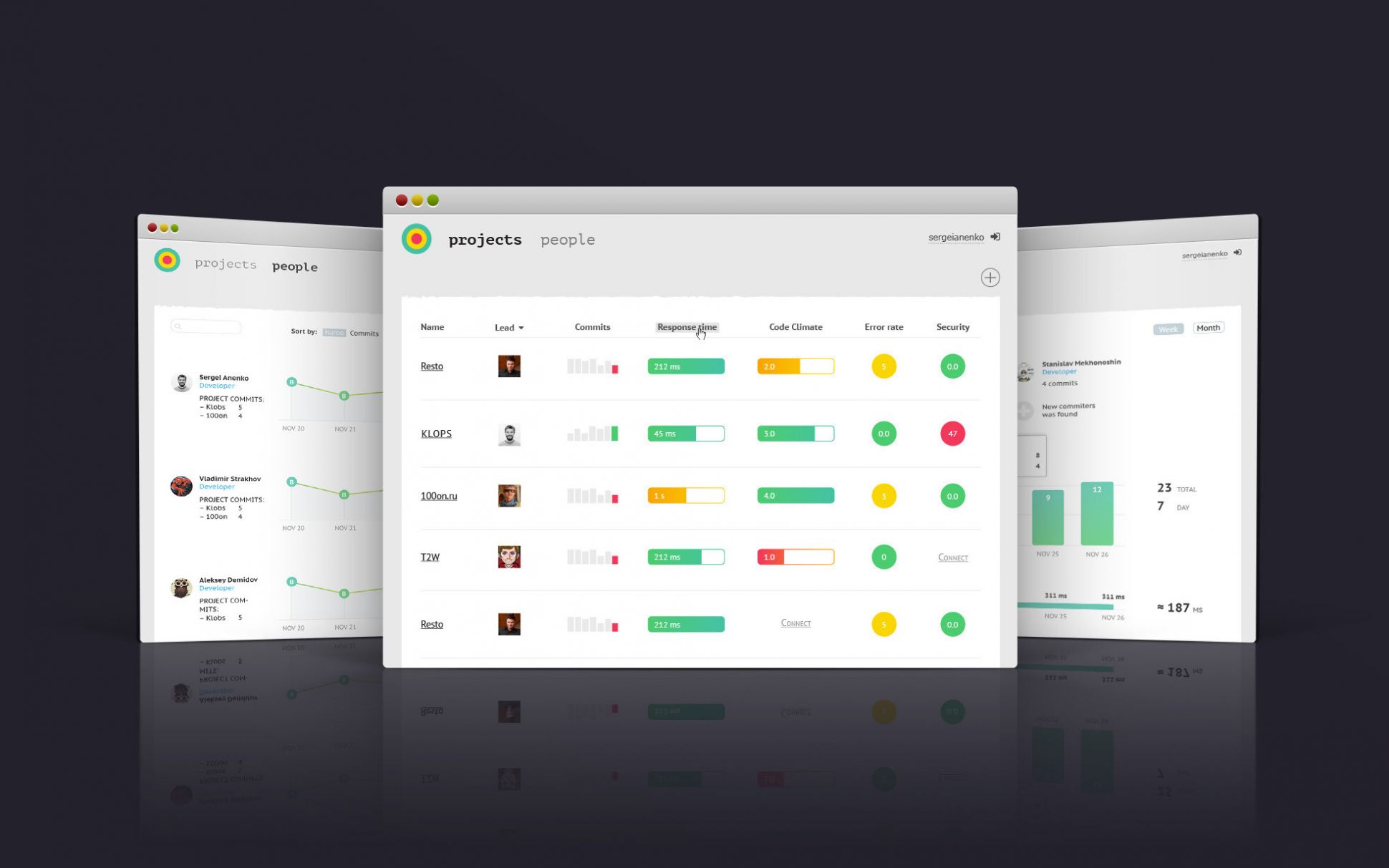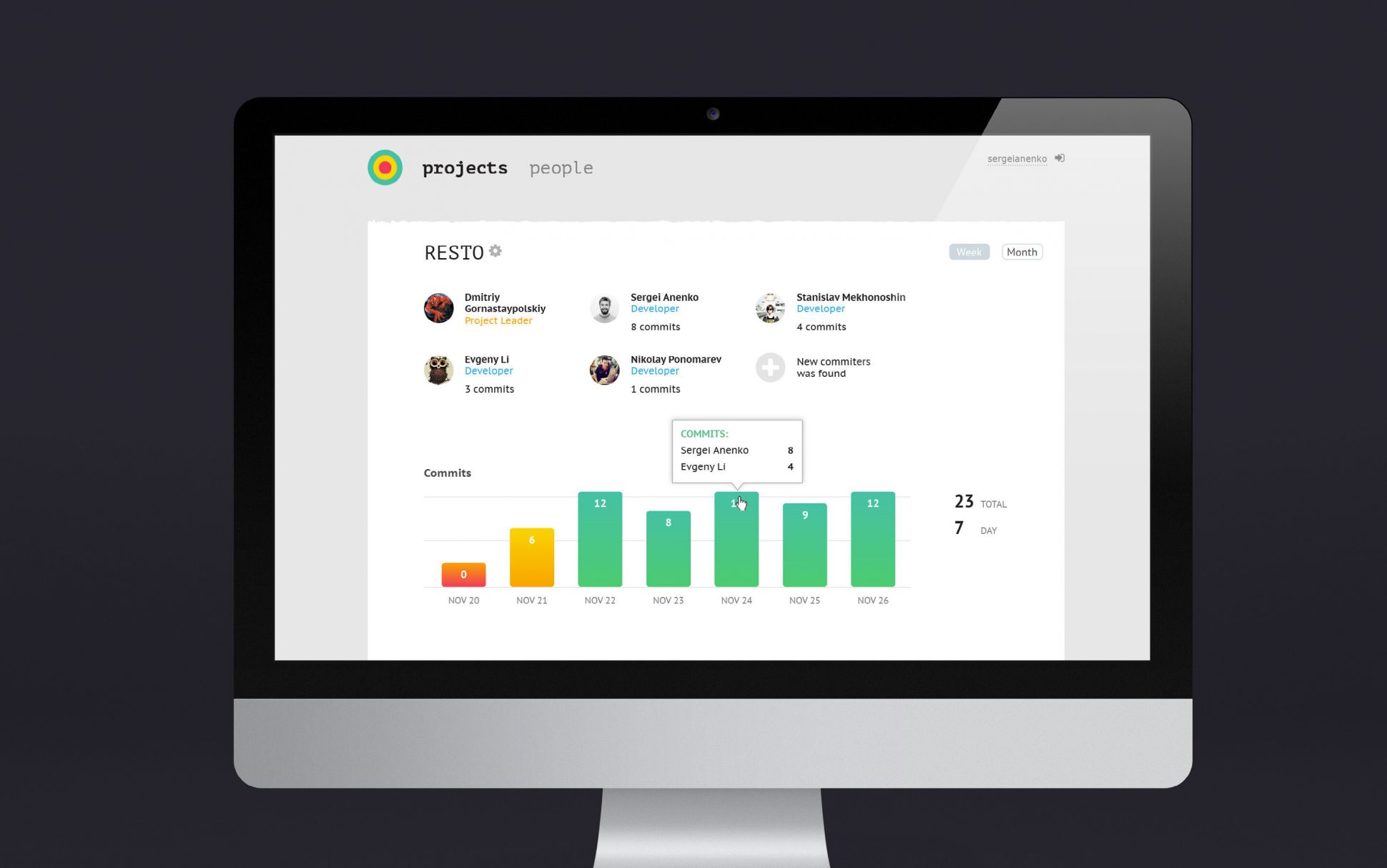A dashboard service for quality control of client projects
In six months, Evrone developed a Ruby on Rails application called Pulse: a quality management dashboard that displayed all current projects and their statuses on one screen.
Today, Evrone employs hundreds of people. But once we were a small IT company of 15 developers. Nevertheless, even then we achieved great results on client projects, and we were trusted by big brands like Kupikupon and Let’s Eat at Home.
Our clients received, not only completed business tasks, but also our full knowledge base, and they benefited from our approach to project management. Even before the widespread introduction of CI/CD practices and various manifestos for quality development, we committed ourselves to making sure that every project was successful.
To do this, we strove to be early birds in the development world. We introduced new methodologies and were the first to try promising tools and offer them to our clients.
The challenge: to monitor the status of all client projects
The first major project quality control tools were Code Climate and New Relic. We used them to analyze commits and monitor the state of the codebase and servers. As new clients came, the number of projects increased, and Evrone faced a problem: additional managers were needed for quality management.
We wanted to find people with the right experience and skills, but the search for these specialists was long. It was possible to take people with similar experience or just management abilities, but training them to a suitable level would take as much time as finding senior specialists. During a period of six months, we had to fill several managerial positions, while continuing to work smoothly for our clients.
To prevent the quality of work from suffering during our expansion, we decided to develop an internal product development metrics dashboard for controlling the quality of projects.
The solution: dashboard for quality control
In six months, we developed a Ruby on Rails application called Pulse: a quality management dashboard that displayed all current projects and their statuses on one screen.

We connected all project repositories and services for quality control to it. On the backend, all data and changes were analyzed non-stop.
The manager used a single window, which displayed all projects with assigned statuses. If there was a problem, the project was highlighted in yellow, orange, or red (depending on the urgency and severity of the problem), and the manager received the necessary notification.
Empower your business with real-time data and analytics solutions like Pulse. Let's innovate your next project together.
We analyzed several parameters at once:
- Loading and working capacity of the project
- Availability of fresh backups
- Download speed of the whole project and the main one, separately
- Problems on the server side (including those related to the load)
- The appearance of errors during tests
- Number and frequency of pull requests
- Participation of developers in different projects
- Planned and actual load

Testing product hypotheses
We understood that, first of all, we needed Pulse ourselves and that dashboards for monitoring the quality of software products are rather niche solutions. Despite this, we decided to use it to learn how to test product hypotheses and plunged into Customer Development, in order to better understand customers who were looking for a sustainable business model in the future.
Here's what we did to put our startup launch knowledge into practice:
- Studied the current solutions on the market for project monitoring and control processes
- Identified the target audience of the product
- Developed business model and value proposition hypotheses
- Developed and launched a promo website
- Presented our product to technical teams suitable for the target audience profile
- Conducted several test implementations and collected feedback
- Made quick product changes and additional presentations
Pretty quickly, we ran into budget and time constraints, so we documented all the lessons learned and tested hypotheses to add to our internal knowledge base.
The result
By using Pulse to track resource availability and implement effective software asset management, we gained the necessary development efficiency and time to find managers and technical specialists for the further growth of the company, after which the project was archived. In addition to directly saving resources and time, we were able to gain useful experience developing project quality management tools, as well as launching and pitching a technical product.
It also helped us refine our internal development process and make building internal solutions and development of our own products a part of the Evrone corporate culture. After Pulse, Vexor and Evrone City Portal were created. We shared some of our further developments with the open-source community, for example, projects like Dotenv-linter and Datanymizer.
If you are looking for a team to develop a digital product from scratch or want to improve your efficiency through the digitalization of processes, submit a request using the form below, and we will contact you to find out how we can help turn your idea into the desired results.